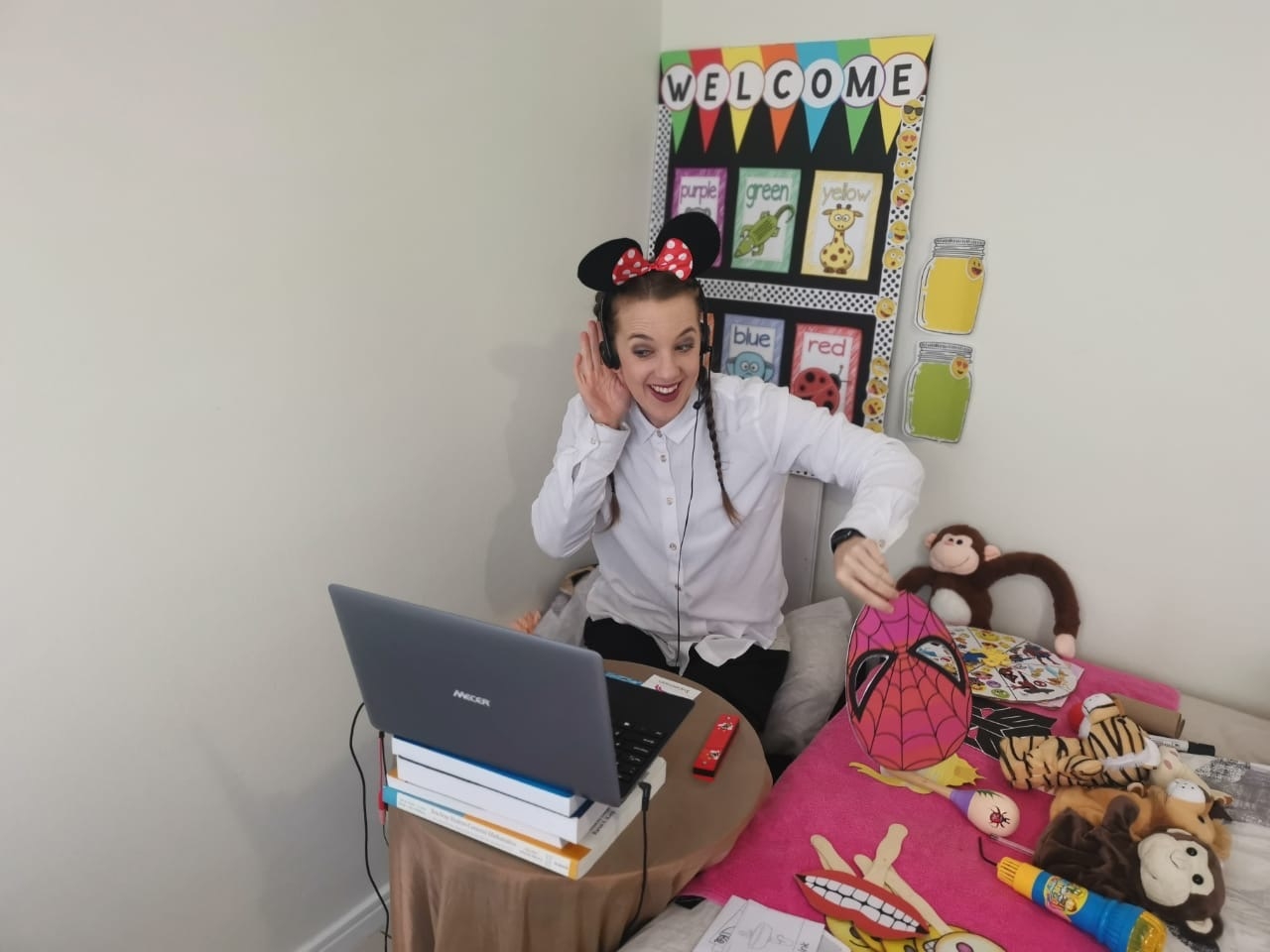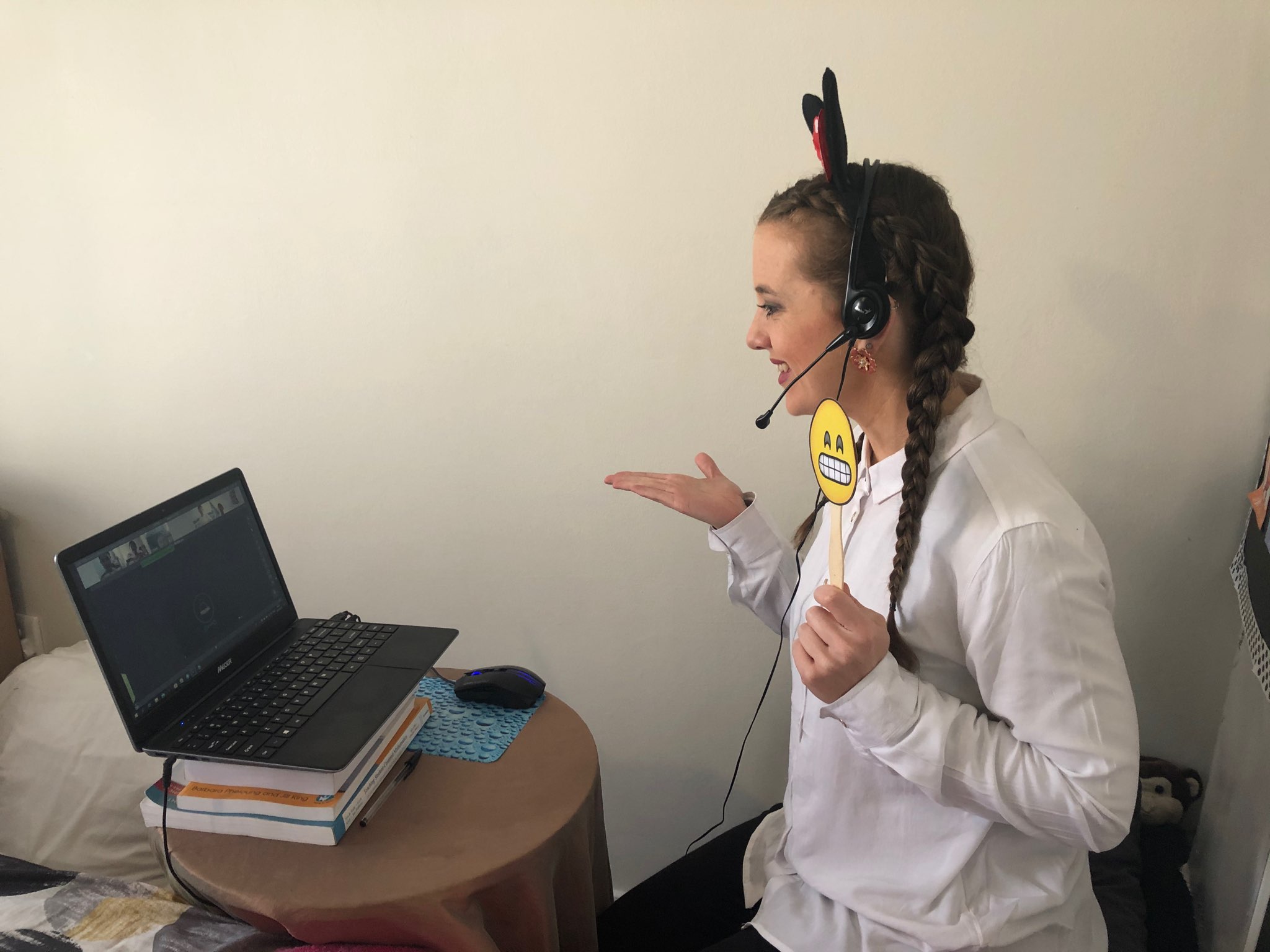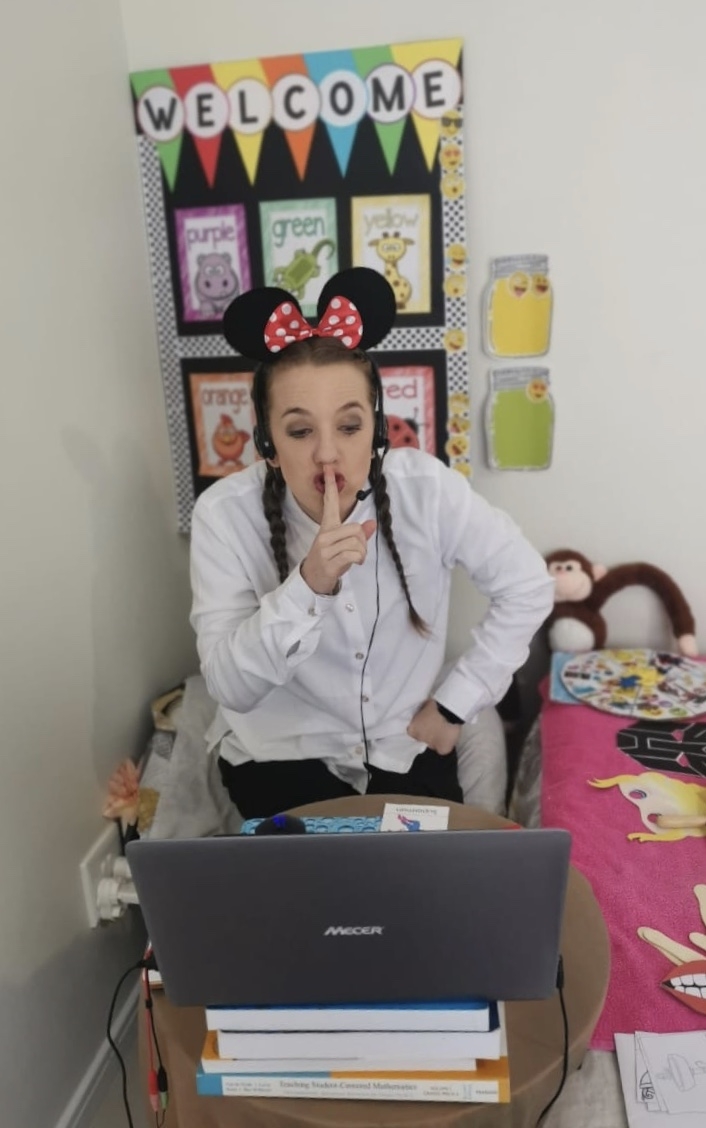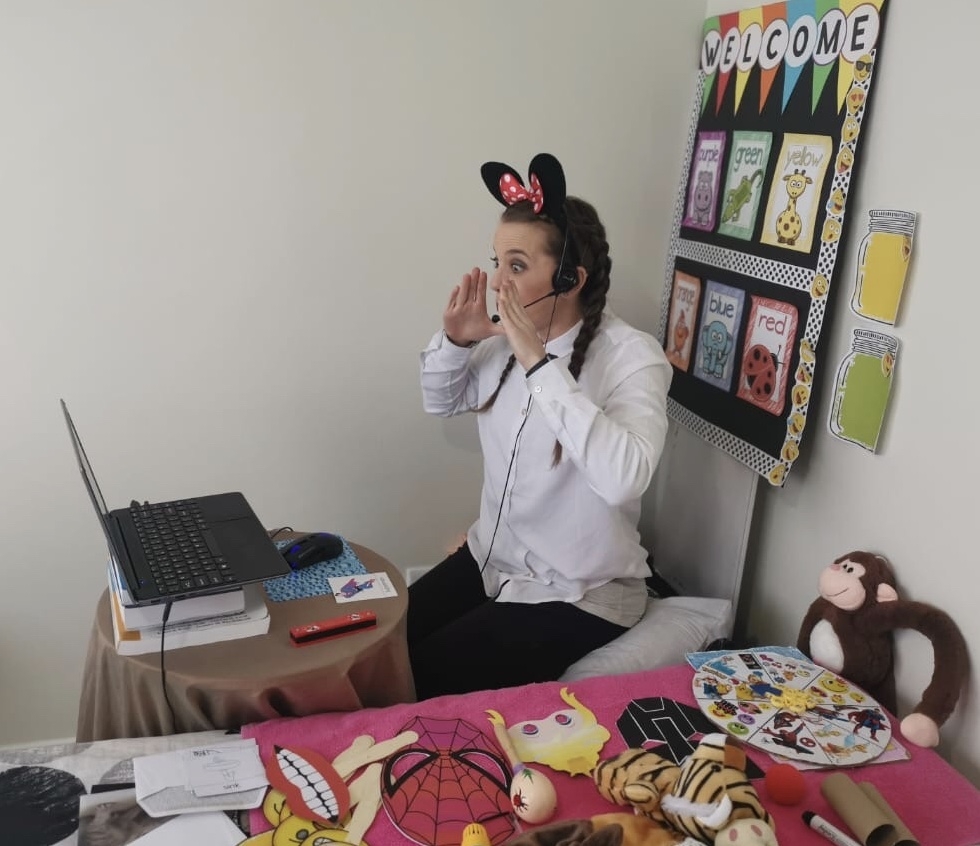Creating the best virtual classroom is something teacher Melissa knows all about. After experiencing teaching in the classroom in Thailand and her native South Africa, she decided to start freelance English teaching online. Melissa is here to share with us her top tips for creating the most creative and effective virtual classroom. We’ve seen hers – and it’s one of the best we have come across! Take it away Melissa.
There are so many different ways that you can create an engaging online classroom. The most important thing to remember is that you do not need to spend a lot of money. You might even have a lot of props already lying around at home. Make sure to be creative and think outside of the box.
So, how do we create this virtual classroom that will replicate the real-life classroom? There’s a few key steps. Let’s go through them!

Making the most of your background to be interactive
If you are going to be teaching kids, then creating a child-friendly background in your virtual classroom is important. Making it bright and colorful is really useful, as it will be more visually appealing to your students. Here’s some ideas for how to make your background kid-focused.
– Creating a poster is always a good idea. You can use pictures, alphabet letters, colour charts, pictures of animals, colorful borders or shapes. You can also have a welcome sign and a sign with your name. The main idea is to make the poster colorful and bright to give you a nice background while you are teaching. Some teachers prefer not to stick things on their wall, and that isn’t a problem. You could even use a cardboard box and place it on a table behind you or even stick your poster on a mirror so that you won’t damage your wall.
– Another really cool idea is having some sort of sheet or cloth that has kid-friendly images on it. You can hang this up behind you. This is also really handy if you are traveling or working abroad as you will be able to fold it up and fit it in your luggage easily.
– If you prefer not to have any physical background, then having an application or software system that allows you to use different backgrounds is useful. I have previously used ManyCam, which is a software tool that allows you to create your own pictures, borders and backgrounds. You can also use a green screen to have lots of unique backgrounds. It can come at a cost, so make sure to check the prices out before downloading. I personally really like this software as it allows you to change up your classroom often.
For some teachers, teaching kids can be a complete no-no. If you prefer teaching adults, then creating a professional environment is key. You can have something as simple as a map of the world, travel pictures, a white board with markers or even a chalkboard.

Utilizing your props to create the best virtual classroom
Props are typically used more in classes with children. You need to be able to use both your props and integrate TPR (total physical response) into your teaching. TPR is an approach to teaching based on the idea if you have something physical in response to language, then learning is faster and more meaningful. For example, if you are teaching one of your students action verbs and you say the word ‘jump’ then the student will jump. Integrating both TPR and props into your classroom will make your classroom environment a healthy place to learn. Here’s a few ideas for types of props you could use in your virtual classroom in addition to the resources that Premier TEFL recommend!
– If you have a young student who is shy and less confident in the classroom, then it could be a good idea to have some puppets or a teddy bear. These can be made with socks, paper puppets or even finger puppets.
– You may also find that children in particular can get distracted and lose focus. There’s nothing worse than having a disinterested student in the classroom. An awesome prop I would recommend is having some sort of musical instrument. You can make a shaker out of a toilet roll and rice, use spoons to tap together, play whistle, harmonica or flute or you could even create makeshift drums with recyclable tins. Bonus points if you have a guitar and can play it!
– Another great prop to use in your classroom is a white board with markers. This can be great for students of all ages. It can also allow you to demonstrate things that your learners may not understand through explanation alone. For example, you may have learners who do not understand how to draw a line, circle, tick or cross. You can demonstrate this on your whiteboard.
– Having flashcards can also be an awesome way of keeping learners engaged. Printing can be an expensive cost, so drawing your pictures can be just as useful but free to do. Some companies will allow you to add documents on to the teaching platform, so you can create slideshows, do activities and play fun games. Companies will definitely differ depending on who you choose, so remember to research before deciding who to work for. Check out Premier TEFL’s ultimate guide of teaching platforms to get an idea of what companies might suit you.
– Another random but effective prop to use can be a plastic microphone. This can be particularly useful when you are teaching songs to children as it allows them to see when it is their turn to repeat the words. You can do this by moving the microphone towards them and back to you.
– An idea for a prop that is a little more expensive but equally as useful is a portable tablet. This can be beneficial for those who don’t want to cart around a lot of props if they are traveling. Having a tablet can allow you to create slideshows with flashcards on it to present to your learners instead of making all your props by hand. This can certainly be a lighter and more efficient way of teaching online and traveling.

Using a reward system to boost learner morale
I find that rewards are so important when teaching English online. Rewards create a positive atmosphere which helps to build up student’s confidence, and when teaching more than one student it can give students a push to compete against their peers. Usually older children enjoy the competition in the classroom. It’s also a great idea to use warmers, fillers and coolers to supplement your entire lessons. Here are a few examples of some of the rewards you could use in the classroom.
– The Spinning Wheel: to do this, cut out a thick piece of cardboard and divide it into eight slices like a pizza. Fill up each slice of pizza with things like Disney characters, stars, smiley faces or flowers. Glue a spinning tip to the middle, place a cut-out arrow and stick it on top of the spinning top. You can spin the wheel if you feel the learner did well and want to reward them. They always love seeing where the arrow will stop!
– Pokémon Reward Chart: this is another cool method of rewarding younger students. Cut out the shapes of Poké balls and write numbers on each of them, for example 1-6. Find some Pokémon pictures to place under the Poké balls and allow the learners to choose their own number and show them what they have won as a reward. This gives them the freedom of choosing their own reward, and the excitement of catching a Pokémon. Switching up the Pokémon is a good idea so the students aren’t always choosing the same Pokémon.
– The Ice-Cream Build Up: this reward system is also popular for both younger learners and adults as it allows the students to visualize their development. Cut two ice-cream cones and at least six ice-cream scoops to place on top of the cones. Try to make them different colours too, to mix it up a bit. It is fun to use this reward system as the students almost see it as a competition and they always want to perform best. When they do things well, they can build on their ice-cream until it becomes a monstrous-sized snack!

If you are able to incorporate all three of these things into your classroom, then you are certain to make a good impression. Having a good background, interactive props and a reward system in place will make you stand out as one of the best online English teachers.
Don’t worry about having to spend lots of money either, as most props and features you can make yourself from things around your house. The main thing to remember is be confident, be yourself and teach the way you would like to be taught. Take it from me, the more effort you put in, the more rewarding your experience will be.
Thank you Melissa for sharing with us your top tips for creating the best virtual classroom. We are so impressed with your online classroom. It is definitely one of the best we have seen! Make sure that if YOU are planning to start teaching online that you take on board some of Melissa’s tips. After all, she is one of the TOP teachers you’ll find. If you want to see more of Melissa’s teaching life, follow her on Instagram. We can’t wait to see what YOU do with your virtual classroom.
The post How to Create the Best Virtual Classroom for Teaching English Online appeared first on Premier TEFL.




